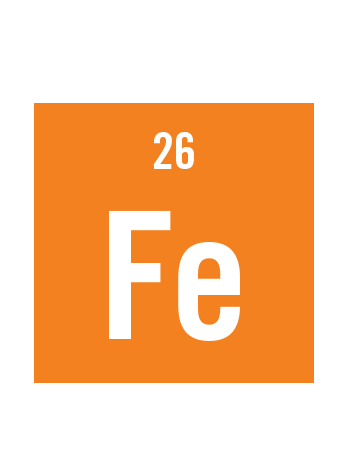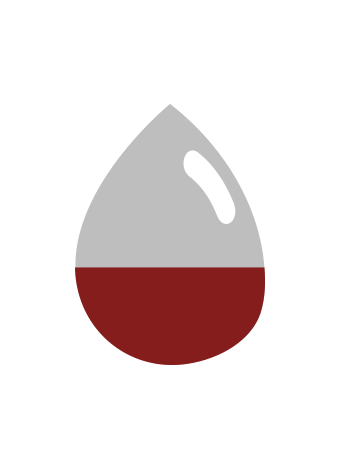Why is Iron Important?

Iron helps build red blood cells.1 There are two types of iron found in food: heme iron (from animal-based foods such as meat, seafood and poultry) and non-heme iron (from plant-based foods and iron-fortified foods). Since non-heme iron is less well absorbed, vegetarians need almost twice the daily recommended amount of iron compared to non-vegetarians.2
What is Iron Deficiency

Iron is the most common nutrient deficiency in the world.3-6 Symptoms of low iron levels can include tiredness, weakness, shortness of breath, and headaches.3,4 Iron deficiency can also lead to anemia, a condition marked by too few or abnormal red blood cells.4 Impaired cognitive development in children and poor pregnancy outcomes are some of the conditions that have been associated with iron deficiency. 3.4
Vitamin C and Citric Acid Aid in Iron Absorption
Get enough iron every day by eating foods that contain iron, such as animal proteins, lentils, potatoes (with the skin), and green leafy vegetables. The iron from plant-based foods (non-heme iron) is not as well absorbed in the body as iron from animal-based foods (heme iron). When consuming plant-based foods, it is beneficial to also consume foods with vitamin C or citric acid, such as Florida Orange Juice, which may help increase absorption of iron into your body. 3-5
100% orange juice is an excellent source of vitamin C, providing more than 100% of the recommended daily value in an 8-ounce (1 cup / 250 mL) glass.* Orange and other citrus juices contribute to Canadians’ intakes. According to Statistics Canada, 25 percent of Canadians drink fruit juice daily.7 Citric acid also occurs naturally in orange juice and contributes to its sweet-tangy taste.
DID YOU KNOW?
Iron is the most common nutrient deficiency in the world. Simply drinking Florida Orange Juice along with meals that include plant-based sources of iron may help enhance your body’s absorption of iron.
Nutrition Research Corner for Health Professionals
Iron is the most common nutrient deficiency worldwide.3-6 Iron deficiency is more common in infants, children, adolescents, and women who are pregnant or of reproductive age.3
Iron is a dietary antioxidant1 and involved in energy production and oxygen transport. It is part of hemoglobin in the blood and myoglobin in the muscles.3,4 Iron is also part of many enzymes including glutathione peroxidase and catalase3 that behave as antioxidants in the body. Symptoms of low iron status include tiredness, shortness of breath, and headaches, and severe iron deficiency can lead to anemia and complications with pregnancy.3.4 In infants and young children, iron deficiency is associated with impaired cognitive development and behavior, decreased infection resistance, and temperature dysregulation.3
Vitamin C and citric acid and other organic compounds found in citrus may enhance the absorption of plant-based iron. 3-5
* Values based on a 2000 calorie diet. Nutrient values may vary based on manufacturer, brand and product types.
References
- Canadian Food Inspection Agency (2018, May 11): Nutrient Function Claims. Retrieved June 12, 2019 from http://www.inspection.gc.ca/food/general-food-requirements-and-guidance/labelling/for-industry/health-claims/eng/1392834838383/1392834887794?chap=9
- Dietitians of Canada (2014): Food sources of iron. Retrieved June 18, 2019 from https://www.dietitians.ca/Downloads/Factsheets/Food-Sources-of-Iron.aspx.
- McDermid and Lonnerdal, Iron. Adv Nutr 2012; 3:532-533.
- Iron,In: Dietary Reference Intakes. Institute of Medicine. The National Academies Press,Washington, DC. 2001.
- Iron. Linus Pauling Institute Micronutrient Information Center. Oregon State University. http://lpi.oregonstate.edu/mic/minerals/iron.
- World Health Organization. http://www.who.int/nutrition/topics/ida/en/. Accessed April 20, 2018.
- Statistics Canada (2016, May 18): Health Reports: Vitamin C status of Canadian adults: Findings from the 2012/2013 Canadian Health Measures Survey. Retrieved June 18, 2019 from https://www150.statcan.gc.ca/n1/pub/82-003-x/2016005/article/14612-eng.htm.
